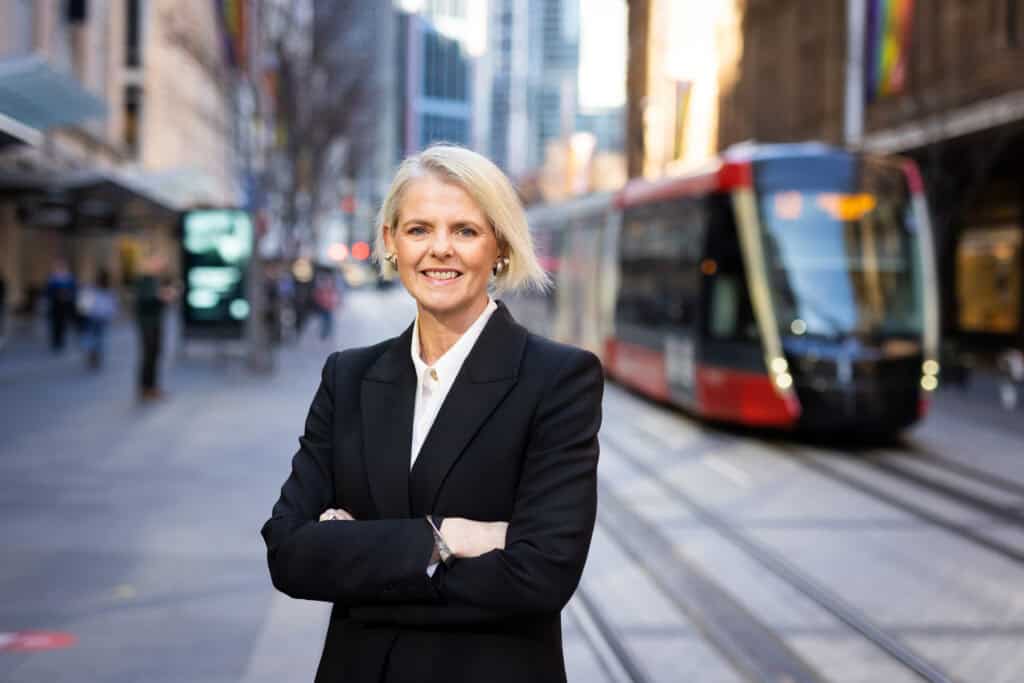
By Michelle Cramer, Future Communities Leader – Australia, GHD
I grew up in an urban experiment – Canberra. Long before today’s thriving political capital, buzzing with student life, Canberra was the Y-Plan of my 1980s childhood. Despite a bus network, the Y-Plan was born of efficiency and associated land planning of the motor car. It is also deeply ironic that my mother did not have a driver’s license. I learned to navigate Canberra using the “bus book” which was the bus equivalent of the landline telephone’s yellow pages, and just as heavy.
Today Canberra is focused on mobility, investing in a light rail and is a city of bikes. This can be said of most urban centres across Australia as we collectively focus on sustainability, climate change and health and wellbeing. Despite this, Australia remains heavily dependent on car travel. The prevalence of cars in Australia, and the fact that most trips are completed by car rather than public or active transport, means that productivity is hampered, environmental issues exacerbated, and social inequities reinforced. Rather than accepting this, and with a deep desire to understand the current and future preferences of Australians, GHD’ Future Communities initiative has undertaken a research project called CROSSROADS.
GHD’s CROSSROADS intergenerational equity research highlights the need for more inclusive and sustainable transportation solutions, revealing many communities find it hard to access reliable and affordable public transport options and are hampered in the limitation of private car use. The research survey over 10,000 people across ten countries, including Australia, New Zealand, Singapore, Philippines, Qatar, UAE, UK, Chile, Canada and the US. It also took an intergenerational approach asking questions about mobility to Baby Boomers, Gen X, Millennials and Gen Z to create a picture of the difference preferences across generations and, therefore, with the younger generations in mind, what decisions we should be making now for the future.
What we discovered was that while support for more investment and more options was universal across all countries surveyed, with 74% of respondents indicating they would use public transport if it was reliable and cost effective, those countries like Australia, where high levels of private vehicle ownership is well documented, exhibited a lower likelihood of uptake of alternative modes.
The research shows clearly that people want to see further investment in public transport systems, to make them more efficient, dependable, affordable, accessible, and safe. It’s a view shared by all generations. Asked whether they would use public transport more to get to work, school, shopping and healthcare if it was easier, more reliable and cheaper, respondents from Gen Z (71%), Millennials (72%), Gen X (56%) and Boomers (51%), were all in the affirmative.
However, our research also reveals generational differences in the perception of alternative transportation methods and the need for government intervention in promoting sustainable transportation. For example, Baby Boomers are less likely to perceive an ease of movement, which may be associated with their increased mobility needs as they age, while the younger generation has a greater sense of urgency towards addressing environmental impact of transportation.
The survey also highlights a worrying difference between genders when it comes to safety and mobility, where female respondents exhibited a lower confidence when considering the safety of our current transport systems, regardless of generation.
What we have learned is the need to prioritise an intense focus on improving public transport is more pressing than ever. The World Economic Forum states that by 2050 approximately 80% of the world’s population will live within cities, placing more pressure on infrastructure services. In Australia, our population is expected to grow to over forty million by 2060, with 75% of those people residing in our four largest cities. As people congregate in these expanding urban centres, the ability for people to get to employment, education, health care services, supermarkets, and recreational facilities – whether that be by rail, car, bike, scooter or on foot – is becoming an increasingly critical problem to solve.
A well-designed, implemented, and integrated mobility network will always be challenging to achieve, particularly when urban population growth continues to put pressure on existing networks and systems. Certainly, ad-hoc transport networks and continued urban expansion only adds to these pressures, which impacts on the experience of users and ultimately undermines the credibility of those responsible for delivering our transport services.
Our CROSSROADS research highlights that our transport networks need to include a range of mobility solutions as communities change over time. It underscores the requirement for a long-term vision and commitment to improving access to public transport in our cities. However, in the short term, there is an immediate need to focus on the user experience of our current systems, highlighting the need to address safety and reliability to enable a more trusted relationship between the community and our transport network providers. Only by addressing these issues can we look forward and set the bar for a more integrated and equitable mobility network in the future.